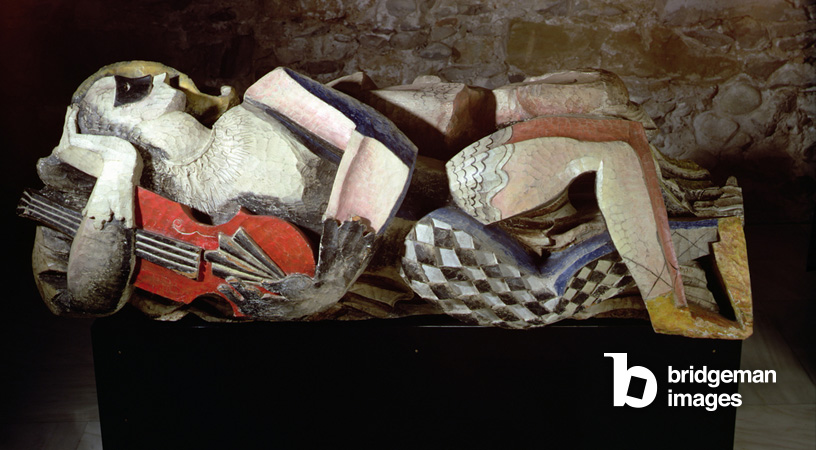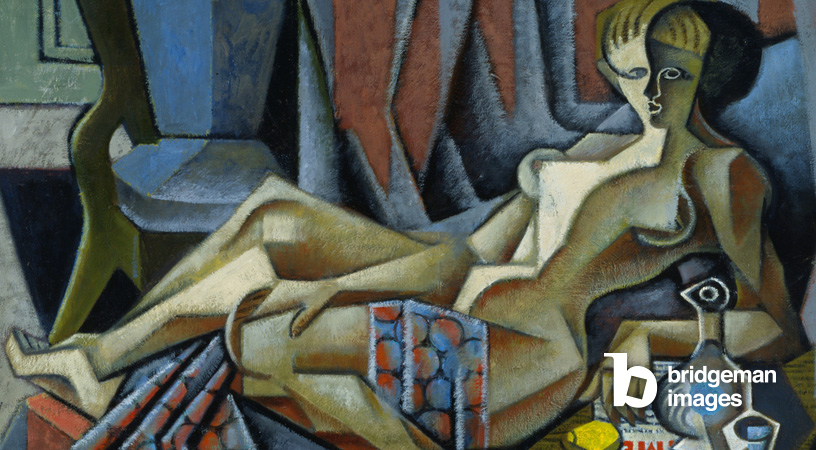Published 09/08/2023
Cubism, the revolutionary artistic movement of the early 20th century, disrupted traditional representation by fragmenting forms and exploring reality from a multitude of angles, thereby providing a fresh and multidimensional perspective on art and the world.
View our selection of Cubist works.
Cubism emerged as one of the greatest artistic revolutions of its time. Inspired by Cézanne's ideas, it found its pioneers in the likes of Pablo Picasso and Georges Braque, before captivating a range of painters such as Juan Gris, Fernand Léger and Robert Delaunay. Above all, Cubism is a conceptual exploration of reality, a visual journey that multiplies perspectives on everyday objects.

The Art of Deconstructing Reality
Cubist artists, far from confining themselves to abstraction, embark on deconstructing reality. Ordinary subjects become the fertile ground for their creations. French painters such as André Lhote, Jean Metzinger, and Roger de la Fresnaye blend academic tradition with Cubist modernity, thus merging two seemingly opposing worlds. The narrative fabric of Cubism, marked by World War I, reaches its culmination, fitting into the tumultuous evolution of artistic avant-gardes.
This movement, extending well beyond French borders, also manifests in other forms of expression, including sculpture and architecture. The imprint of Cubism, a pivotal milestone in art history, resides in its key role in modern art's trajectory towards abstraction.
"Cubism is the art of painting new wholes with elements borrowed not from the reality of vision, but from the reality of conception" - Guillaume Appolinaire
The origins of the term "cubism" date back to 1908, when Henri Matisse used it to describe a work by Georges Braque. Under the predominant influence of Cézanne, Braque and Picasso, the movement embraced an innovative aesthetic perspective in 1907. Their intention was not to mimic reality mimetically, but rather to geometricize it, while avoiding plunging into abstraction. Forms fragment into a multitude of facets, like "cubes," offering a perspective impossible to achieve in the concrete world. Artists no longer settle for representing in three dimensions but move towards a fourth dimension, thus attesting to the conceptual nature of their artistic approach.

In 1907, at the heart of his Parisian studio, Picasso completed "Les Demoiselles d'Avignon." Often seen as the manifesto of this emerging aesthetic, the work was influenced by African art and its synthetic forms. Other artists quickly rallied to Picasso, and it was Braque who became his primary artistic companion. Their close collaboration, notably in 1909, gave birth to Analytical Cubism, characterized by its cryptic complexity, a restricted palette, and elaborate perspective effects. Alongside them, other artists formed similar groups, such as the Puteaux group led by Albert Gleizes, Jean Metzinger, Francis Picabia and Fernand Léger.
Evolution of Cubism: New Colors and Approaches
The years 1910-1914 witnessed the evolution of Cubism. Braque and Picasso introduced more colours to their palette and explore new techniques, including collage, marking the synthetic period. However, despite their growing influence, the two artists do not participate in the Salons. The public becomes more familiar with the works of Puteaux artists, including Gleizes and Metzinger, exhibiting in Parisian Salons and at the Salon de la Section d'Or dedicated to Cubism. These artists adopt a less radical approach, revisiting classical and modern themes. Sculpture is also involved, with artists like Lipchitz, Zadkine, and Archipenko engaging in the Cubist movement, followed by Picasso himself, who explores sculpture in the 1910s.

Confrontation of Avant-Gardes: Cubism vs Futurism
The decade of the 1910s is marked by the confrontation between Cubism and Italian Futurism. The two avant-gardes vehemently oppose each other. Marcel Duchamp, a member of the Puteaux group, finds himself at the center of this dispute when he exhibits his famous painting "Nude Descending a Staircase" at the Salon des Indépendants in 1912. The French Cubists then criticize it for being too futuristic. However, this work receives a more favorable reception in New York, where it is displayed at the Armory Show in 1913.

World War I marks a turning point for Cubism, as Picasso moves away from this aesthetic to revisit a more classical style. During this period of nationalist withdrawal, Cubism is criticized for its openness to international trends.
Thus, Cubism remains a privileged witness to the artistic evolution of the 20th century, an intellectual and visual adventure that, beyond its upheavals, leaves an indelible mark on the course of modern art.
View our selection of Cubist works.
Get in touch with our team; we are always delighted to assist you with your inquiries.


